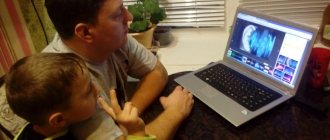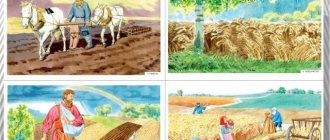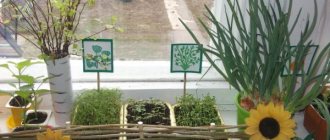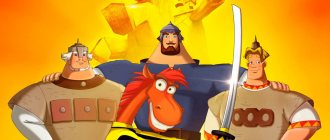project "Ants"
Subject: "
Ants are familiar strangers.”
Target:
study the structural features and behavior of ants
Novelty
research work consists of studying the life activity of an ant colony in the process of performing practical research
The work used theoretical and practical methods: analysis and classification of material from various sources, conducting simple experiments
Practical meaning:
The material presented in the work may be of interest to school students.
I did not choose the topic of my work by chance; I was very interested in the most famous social insects - ants.
I. Introduction
I first became interested in ants when I was 5 years old. Then I observed them on the street near the house, examined them under a magnifying glass, and I began to wonder what kind of insects these were?
Target:
study the structural features and behavior of ants
It turned out that ants are one of the most famous insects. Among the order of Hymenoptera there are no single ants at all. The majority of the family consists of working individuals - sterile females, lacking wings. They perform all the necessary work in the nest: build and clean it, get food, take care of the offspring. The caste of soldiers guarding the nest consists of ants with large heads and powerful jaws. All members of the family are the offspring of the founder female.
This work made it possible to study the life activity of ants based on observations and experiments.
II. Ants – familiar strangers
1. Types of ants.
There are more than twelve thousand species of ants, but I will list the species that are more familiar to all of us and tell a little about each species.
Red forest ants
.
Red forest ants are one of the most important protectors of forests from pests, as they consume a huge number of all kinds of insects.
Messor Structor - or reapers
.
Reapers consume plant seeds as food. Nests in the soil are up to several meters deep and can serve as indicators of groundwater. Reaper ants store seeds in deep chambers.
Lasius Nigger – чёрный садовый муравей
The well-known black garden ant consumes seeds and other insects as food.
Faron ant – (house ant)
The pharaoh ant reaches a length of only two millimeters. Its color is red, widely known as the “house ant” that inhabits human homes. It is one of the most famous household pests.
2. Anthill structure
Anthills come in different types: underground, domed, woody.
2.1. Dome anthills
The dome anthill is very complex. The anthill dome, built from twigs and pine needles, can reach two meters in height and three meters in diameter. The surface of the dome is riddled with numerous entrances, which are opened and closed by ants depending on the time of day and weather. The underground part of the nest, where the family overwinters and the chambers with food reserves are located, is located under the dome and goes to a depth of up to a meter.
Progress of the game: One driver is an elephant, the rest are ants.
Elephant: “Let the ants walk and dance from the heart .”
Children dance as they please.
Elephant: " The ants ,
I'm tired of them.
The elephant went for a walk
Trample ants!»
The ants scatter , the elephant tries to catch them - to touch the ant . From those who were not caught, a leading elephant is chosen using a counting rhyme.
Target walk " Ants "
Goal: expand children's understanding of ants - workers ; expand your vocabulary; cultivate a caring attitude towards insects;
Calculations
Million-dollar niche, weak competitors, experience in the agricultural niche, special equipment (in fact, a product), developing ratings. We work within the framework of these competencies.
- For 1000 rubles a day you need 20,000 traffic (we don’t count affiliate programs, but everything according to the old scheme and very pessimistic, 50 rubles per 1000 on direct)
- The KPI of articles is 400 in the first year, so you need to write out (again according to the old scheme, even though we are now making small cards) - 1,500 articles
- One article = 500 rubles turnkey (already with placement), total investment 750,000 rubles
- Payback after reaching the planned income: 25 months
This is really fucked up, guys... Everyone around me thinks so, but I’m categorically not happy with it. Therefore, lower is more optimistic.
- 1000 rubles per day is a maximum of 10,000 traffic (yes, because we don’t have projects that bring in less than 100 rubles from 1000 in direct, and this also does not take into account affiliate programs, because everything is done with an emphasis on the product, and there are already 200 /1000 minimum)
- KPI is still 400, well, simply because this is the first year. And in the second one you can easily qualify for 800. But you already need about 750 articles.
- One article is 500 rubles. And the investments are already 375,000 (well, maybe 400).
- And the payback as a result is about 12 months.
Where did you miscalculate? What did you not take into account?
Taking into account the deadline, investments per month amount to about 47,000 rubles. Therefore, we stop eating khinkali, buying vacuum cleaners for 60k, drinking whiskey for 10k per bottle and behaving more modestly. At the same time, we transfer almost all the income from the sites to reinvestment (old projects are also being developed, but the focus is on the new one) for 200 days.
Development requires about 30k rubles. Only 120 were planted in boletus. But this is what it was made for, so that we could have solutions that would then allow us to save a lot on development and launch.
Ant farm (formicarium) Ready business project. Part 1
I didn’t think that ants would become so popular, keep a ready-made business project. Print farms, catch ants. It all started with the desire to have a pet. Having suffered with fish and birds and all sorts of smelly rodents, I decided to get ants because... I wanted as little care as possible and a minimum of responsibility. They are a completely independent organization, they don’t care about the owner, they cook their own food, take out the trash themselves, don’t yell, don’t smell. Throw in some food, fill up with water and you don’t have to worry about them (Reaper ants), you can even leave for a long time without fear of dying from hunger or destroying your apartment, as was the case with my cat :)
Looking at an anthill is always interesting, you take your mind off everyday worries, think about the eternal... You observe your own microcosm, imagining that you are God for them:)
But experiments on them are a completely separate topic.
I designed the formicarium according to criteria from personal experience:
- The anthill must be vertical (to allow observation from different sides)
- Not large in size so that it does not take up much space on the desk (120x120x120mm)
- Built-in light (plays a very important role for putting children to sleep as a night light)
- Presentable appearance (well, I don’t like the plexiglass molds with bolts, somehow it’s not right IMHO)
- Can be assembled and disassembled without bolts or glue, but without the possibility of ants escaping.
Said, done... and then it started.
A bunch of unsuccessful farms and months of experiments until I achieved comfortable living for ants in a 3D printed formicarium. STL files for printing here If you want me to make it, write to me in a personal message.
Arena
There were options without an arena at all, but practice has shown that it is still needed. I adjusted the height of the arena so that the magnification lens for the phone could focus properly. The cover goes inside the arena to apply anti-escape along the edges of the arena. Pay attention to the back wall, there is a hole for the air plug, it needs to be cut out. If you do not want to attach a colonization tube or an additional arena, leave the wall as is, the gap in the lid is sufficient for air.
I made a hidden opener so that children would not be tempted to open the lid again. There is a hole at the bottom for a paper clip (it opens like a SIM card slot on a smartphone)
The air plug performs several functions at once. Ventilation and adapter for in vitro colonization. You can also connect to another arena (in case of war with other ants)
And of course the backlight. Here it’s your choice, if you don’t need it, don’t touch anything, leave it as is. I left one layer at the base for the batteries, which can be easily cut out.
If you need backlighting, cut out the battery compartments and connect them according to the diagram. There is a hole under the passage where the wires are inserted. The recesses for the terminals are precisely calculated to install the contact elements without glue, you can find them here. I used any LEDs from the LED strip, the main thing was to maintain the polarity. There is no hassle at all with the switch; you can find it in any radio store, or order it here.
I had to tinker with the lid. I made an arena for a lid with a size of 120x80mm, but the crooked glaziers could not cut the glass evenly. I had to make crutches for glaziers, that is, a frame for the lid, and this is for the better because... The appearance of the arena has become more presentable.
Any decorations can be printed. I personally really like the Egyptian pyramid theme. Previously, a decorative background was simply laid down and covered with sand. But the ants made tunnels and dug everything out, so now I’m filling it with plaster.
Now the most important thing. I print with PLA plastic, of course I tried ABS with an acetone bath and even wood. But during the experiments I settled on PLA plastic from FDplast, it prints wonderfully, is processed perfectly and the price is pleasantly pleasing. Each formicarium detail has its own settings and material; I print the arena with the following settings:
In order not to miss anything important, I posted screenshots of all my settings. It will seem strange to many to print with such settings, but as I said earlier, I achieved the best quality and accuracy of printing by adjusting the settings here and there for a long time, squeezing the maximum out of my printer. The arena print layer is 0.25mm, usually I print 0.15mm. But even with 0.25mm you get an excellent result. I don’t even sand the surface, only in the seam areas and along the edges.
The assembly video is here (I warn you, it’s very boring, put it at double rewind)))
Printable model here (or I can print and assemble the farm for your money)
In the next post I will tell you the intricacies of printing the anthill itself and the settlement procedure.
To be continued….







